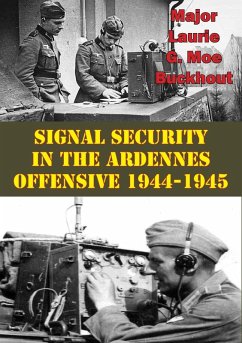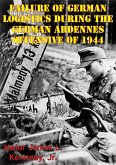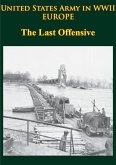This thesis investigates the significance, theory and practice of tactical signal security (SIGSEC) during the Ardennes Offensive of 1944-1945. The work includes a brief introduction to the offensive and to the history of SIGSEC, and examines how the American and German armies safeguarded communications from the enemy. Inherent in this study was an investigation of actions taken by these armies to exploit their adversary's SIGSEC and the processing and exploitation of the signal intelligence (SIGINT) they obtained.The study concludes that both armies had similar equipment, basic procedures, and training in the areas of communications, SIGSEC and SIGINT, and suffered similar deficiencies in these areas. Analysis, however, revealed a deep disparity concerning their use and importance. The Americans' near complete lack of regard for tactical SIGINT was a major factor contributing to the success of Hitler's deception. The U.S. Army relied heavily upon intelligence gleaned from the German ULTRA code, and American intelligence officers were untrained in the use of tactical signal intelligence, mainly using it to validate operational plans. This attitude is reflected also in the American emphasis on SIGSEC. The Germans, however, were more experienced in SIGINT and SIGSEC, and formed a structure and doctrine that focused on immediately influencing tactical operations.
Dieser Download kann aus rechtlichen Gründen nur mit Rechnungsadresse in A, B, BG, CY, CZ, D, DK, EW, E, FIN, F, GR, HR, H, IRL, I, LT, L, LR, M, NL, PL, P, R, S, SLO, SK ausgeliefert werden.








![August Storm: The Soviet 1945 Strategic Offensive In Manchuria [Illustrated Edition] (eBook, ePUB) August Storm: The Soviet 1945 Strategic Offensive In Manchuria [Illustrated Edition] (eBook, ePUB)](https://bilder.buecher.de/produkte/44/44754/44754032m.jpg)
